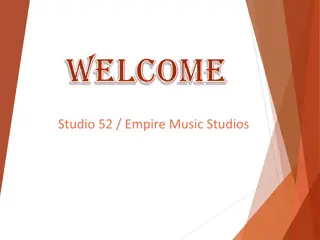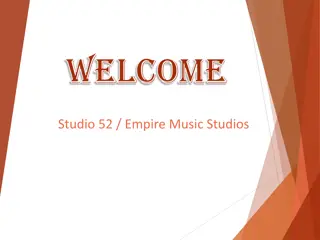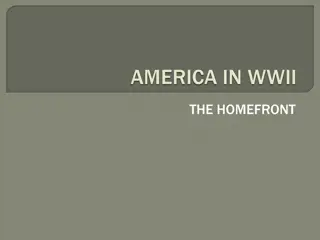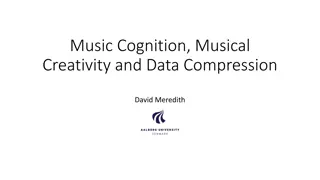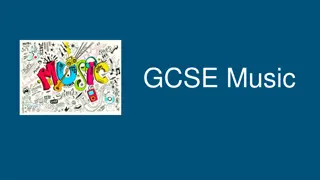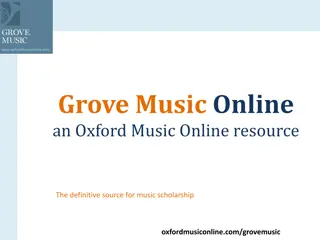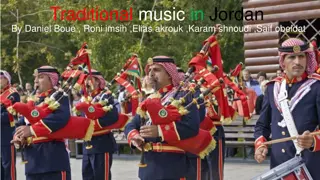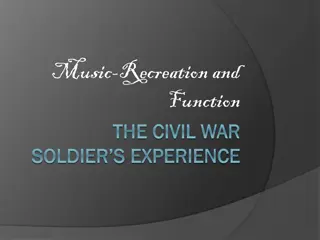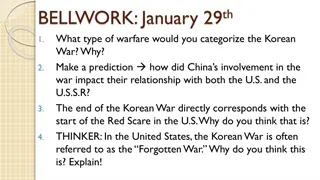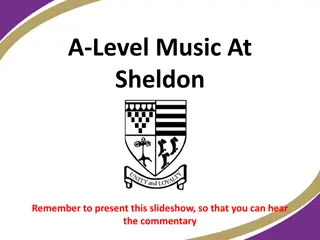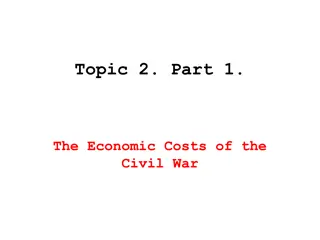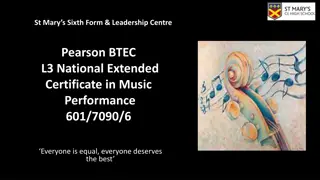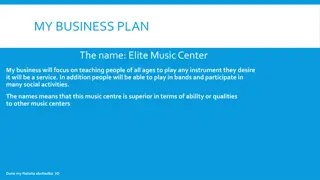The Impact of Music During the Civil War
Music played a significant role during the Civil War, with soldiers singing and carrying song books, creating a sense of camaraderie. Over 10,000 pieces of music were published by the end of the war, providing comfort and hope to those on the front lines and those at home waiting for their loved ones to return. Generals like Robert E. Lee recognized the importance of music in maintaining morale within the army.
Download Presentation

Please find below an Image/Link to download the presentation.
The content on the website is provided AS IS for your information and personal use only. It may not be sold, licensed, or shared on other websites without obtaining consent from the author.If you encounter any issues during the download, it is possible that the publisher has removed the file from their server.
You are allowed to download the files provided on this website for personal or commercial use, subject to the condition that they are used lawfully. All files are the property of their respective owners.
The content on the website is provided AS IS for your information and personal use only. It may not be sold, licensed, or shared on other websites without obtaining consent from the author.
E N D
Presentation Transcript
Civil War Music Songs and Lyrics Nancy Taylor American Institute for History Education Blast, Pennsylvania June, 2012 http://www.smithsonianmag.com/history-archaeology/The-Sentimental-Ballad-of-the-Civil-War.html
Pennsylvania Standard 8.1.8.B. Compare and contrast a historical event, using multiple points of view from primary and secondary sources.
NO MP3 Players! Songs were shared in print but also passed down orally and sang from memory. Soldiers carried pocket-sized song books. The Soldier Boys Songster Beadle s Dime Songs of War Next to the bible songsters were the most common form of printed material carried by soldiers in the field. The Civil War Music Collector s Edition, Time-Life Music, Alexandria, Virginia, 1991, p.14. njsekela.com http://www.nativeground.com/articles/207-sivil-war-music.html
1861 Over 2,000 pieces written and published throughout the North and South 1865 By the end of the war 10,000 pieces were published http://www.nativeground.com/articles/207-civil-war-music.html http://www.nps.gov/history/history/online_books/civil_war_series/3/sec2.htm
Although soldiers enjoyed instrumental music by far the most common musical outlet was singing. mmusic, Soldiers sang, whistled and hummed on marches, behind earthworks, while waiting for orders, in camp, and even on the eve of a battle, with their muskets primed and ready. They sang solo, in duets, trios, and they often formed glee clubs. Sometimes entire regiments, Generals and all, sang on marches. http://www.nativeground.com/articles/207-civil-war-music.html http://www.sonofthesouth.net/leefoundation/civil-war/1862/august/california-joe.htm McCLELLANIS OUR MAN" FAVORITE SONG OF THE ARMY OF THE POTOMAC
I dont believe we can have an army without music. Robert E. Lee 1864 http://www.nativeground.com/articles/207-civil-war-music.html http://www.sonofthesouth.net/leefoundation/robert-e-lee-pictures/robert-e-lee- picture.htm
Emotional Impact On the home front music reminded loved ones of their family members and friends engaged in the war and it offered hope that they would return home safe and of sound body. In camp it offered comfort, inspiration, relaxation, reflection. On the march it rallied troops together. On the battlefield for the nervous and homesick with rifles primed it lifted morale. http://www.nativeground.com/articles/207-civil-war-music.html http://www.hartwick.edu/news-and-events/news-archive-new/civil-war-songs-02-14-11 http://www.sonofthesouth.net/leefoundation/civil-war/1865/march/colored-regiment.htm
Types of Songs Patriotic Sentimental Comic Vicious satire Protest Marching Genteel parlor Rowdy drinking
Directions 1. Listen to your assigned song on the CD before working with the lyrics. 2. Read through the background for the song. 3. Together work through The Civil War Song Analysis Sheet (this will focus on the lyrics and music.) Prepare to share the song and your analysis for a presentation to the class. (3 to 5 minutes) Divide the presentation so that every member in the group takes part in some way. -OR-
If time is available your small group will prepare a skit using the song. This could be a reader's theater style presentation that uses material from your analysis, the background and the song. It could be a presentation of the song with a narrator to do an opening and group members putting action to the words in mime. It could be an acted out scene of soldiers in camp, men marching into battle, a family on the home front or other possible setting from the time period. In each of these cases the singers can sing along with the recording or without the recording. If the song is only sung by one singer on the CD it can be presented with many voices in the skit. If appropriate for your skit, one member pretend to sing the song and the others in character react to the song. But it is important for you to bring the song to life. Make sure from your actions and words we learn something about the song that you discovered in your analysis.
Music is as indispensable to warfare as money. Money is the sinew of war music is its soul. 1862 Editorial New York Herald http://www.nativeground.com/articles/207-civil-war-music.html http://library.duke.edu/digitalcollections/hasm_b1051/
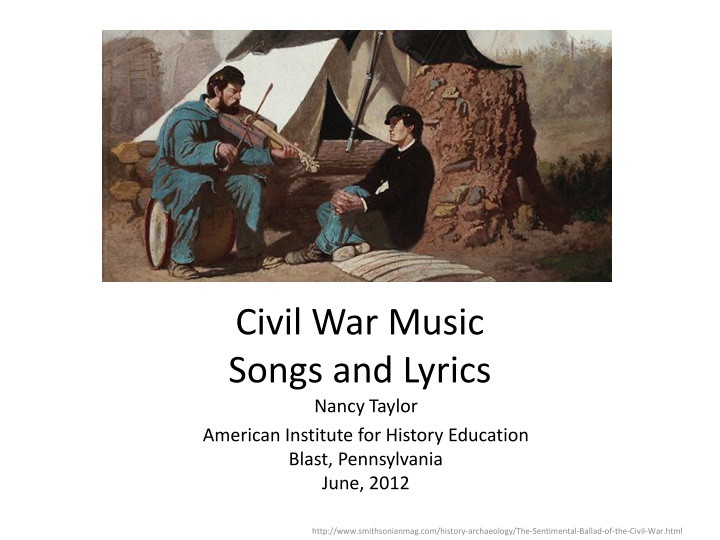

![❤[PDF]⚡ Civil War Talks: Further Reminiscences of George S. Bernard and His Fel](/thumb/20551/pdf-civil-war-talks-further-reminiscences-of-george-s-bernard-and-his-fel.jpg)

